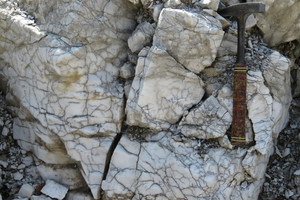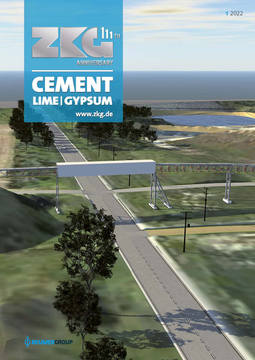Gypsum named Rock of the Year 2022
The BDG Berufsverband Deutscher Geowissenschaftler e. V. (Professional Association of German Geoscientists) has named gypsum the Rock of the Year 2022. Gypsum has an exciting history of formation and possesses highly impressive properties. It is used as a material in the construction industry, as a food additive or as a carrier substance in the manufacture of medicines. As diverse as its uses are, as fascinating are some of the natural sites where it is found. Gypsum is also produced as a by-product of coal-fired power generation, which will have an impact on the supply situation in view of the coal phase-out.
Gypsum has many uses in everyday life – as a bandage for a broken leg, as plasterboard or gypsum plaster in construction. Gypsum also plays a major role in the creation of all kinds of moulds in technology, medicine or art. Under the name of alabaster, it is a valuable decorative and sculptural stone. “Everyone uses plaster, but hardly anyone realises that it also has to be mined and extracted somewhere. Our aim is to draw attention to the importance of geosciences among large sections of the population,” says Dr Manuel Lapp, spokesman for the Board of Trustees.
Occurrence, formation and extraction
Gypsum is both a mineral and a rock. A mineral consists of elements that occur in a chemical compound; a rock is usually composed of several minerals. Gypsum rock occurs in nature as a monomineral rock, i.e. it consists exclusively of the mineral gypsum. Gypsum stone is fine-grained and massive, often white, occasionally brown-grey. In nature, gypsum (CaSO4·2H20) usually occurs together with anhydrite (CaSO4). In Germany, gypsum is mined in 62 quarries and nine underground mines, mainly in Württemberg, western Franconia and the Harz rim.
Gypsum as a by-product of coal-fired power generation – conflicting goals
However, about half of the gypsum processed in Germany has a completely different origin: it comes from flue gas desulphurisation plants (FGD) of coal-fired power plants, where it is produced from the reaction of the sulphur dioxide in the flue gas with limestone. As the use of coal is reduced in the future, this FGD gypsum will be lacking as a raw material and the extraction of natural gypsum will have to be increased. “This creates a conflict between nature and landscape conservation on the one hand and gypsum extraction on the other, especially in gypsum karst landscapes where biotopes of particular beauty have developed. Here we seek constructive dialogue to ensure that the necessary raw material extraction is as environmentally compatible as possible,” says Holger Ortleb, Managing Director of the Association of the German Gypsum Industry (Bundesverband der Deutschen Gipsindsutrie e. V.). The association is the main partner of the initiative this year.
Since 2007, the Rock of the Year has been selected by an expert board of trustees under the leadership of the BDG. Within the framework of events and publications, the public is informed for one year about the selected rock, its geology, its functions in the natural environment, its use and extraction.





